Enlightener Interview Series — Steve Thornton
From its origins of World Press Photo Award winner Wolfgang Peter Geller over 33-years ago, SOUNBOUNCE has grown as the world standard when it comes to quality, premium-class light enhancers for professional photographers. SUNBOUNCE takes great pride in its German engineered products as it does in those photographers that use them and over the years, Geller noticed some of these professional photographers and has hand-picked them as “Enlighteners” to represent how photographers synergize with SUNBOUNCE products.
These enlighteners were picked on their expertise in photography plus how they spread the gospel of photography to others as it’s important to Geller that all photographers help and learn from each other. When it comes to lighting, Geller’s goal is to provide premium-class light enhancers for every photographer, plus to help all photographers improve upon their craft, so here’s another interview with a SUNBOUNCE Enlightener, Steve Thornton.
How do you approach lighting in your photography?
This depends on why I am taking photos. If it is for a client, and they want to concentrate on the clothes, or the action or the face this tells me that I need the light to show this to it’s best and not have deep shadows that may obscure what the client is needing. In this case, I would look for light that does not have a lot of contrast and that does not have an edge to the light. This would be soft light.
Then I will look to see what the location has to fit this type of light and shoot there. Some locations, when used correctly, I only need to point to a spot for the model to stand and I can shoot there. If the garment has a detail that needs side light to show, then I will use either a strobe or a reflector to bounce light across the garment to show the detail.
In the photo below, I’m using a strobe inside a FourSquare softbox to light the model. Because I have the strobe on the left, the light is directed to cross the front of the dress casting soft shadows and because of this, it shows all of the folds of the fabric.

This on location Fashion photograph was shot in Milan, Italy 1 or 2 blocks over from Via Tortona, a major fashion and model agency street. This was obviously shot at night and I used a battery powered strobe to add some Pop to the model and garment. I did not shoot a BTS image on this but the shot before this one is using the same gear, I just moved it to the other side of the street and about 20 feet up the street to shoot this image. The BTS photo is below.
If however I’m shooting for me, or a client that needs a “Statement” image, then I want shadows and contrast light. Now I am looking for light that is either hard, close to hard or very high contrast.
These photos of Claire Bowen were taken just outside of Nashville, Tennessee, USA for “Cowgirl Magazine”.
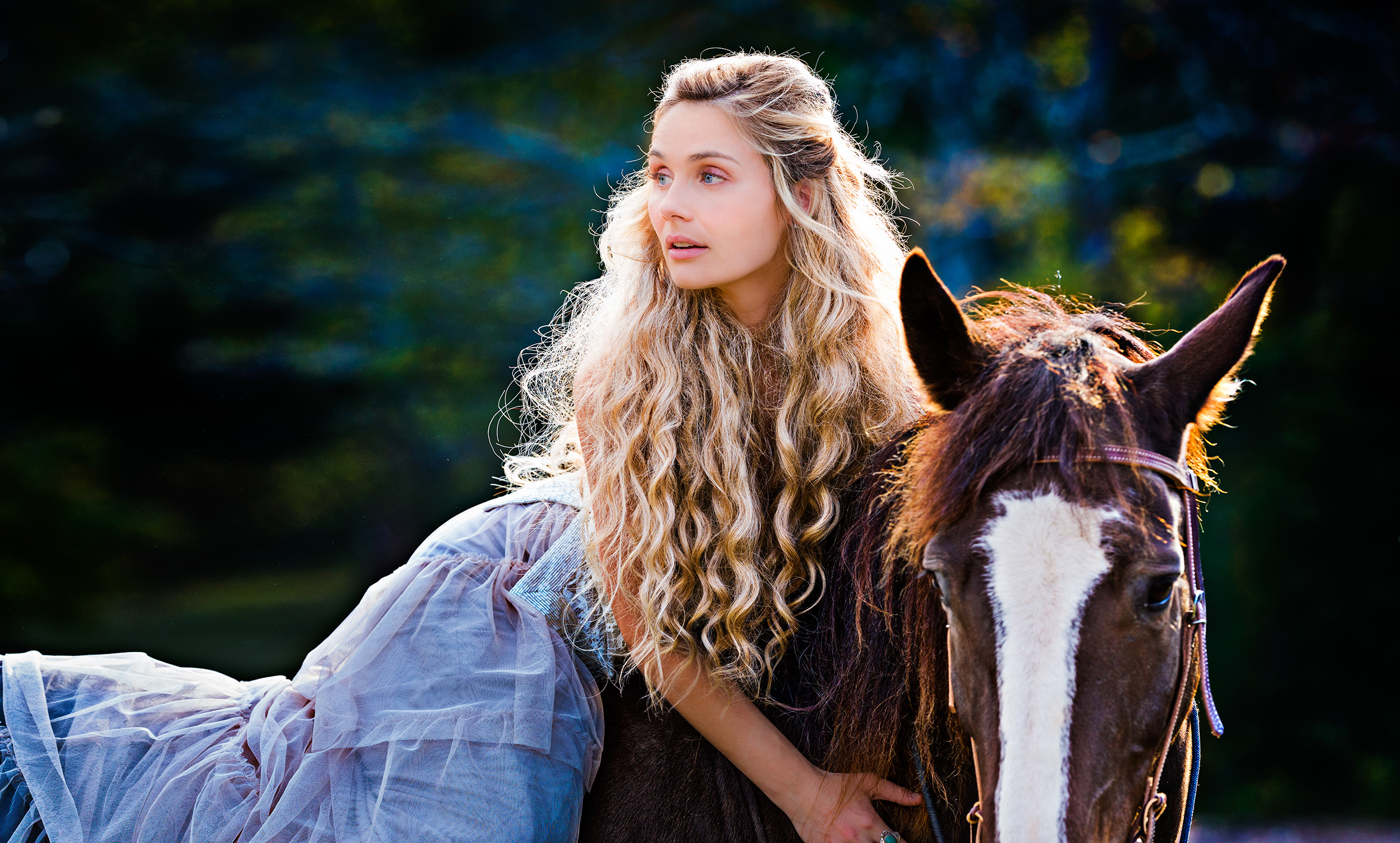


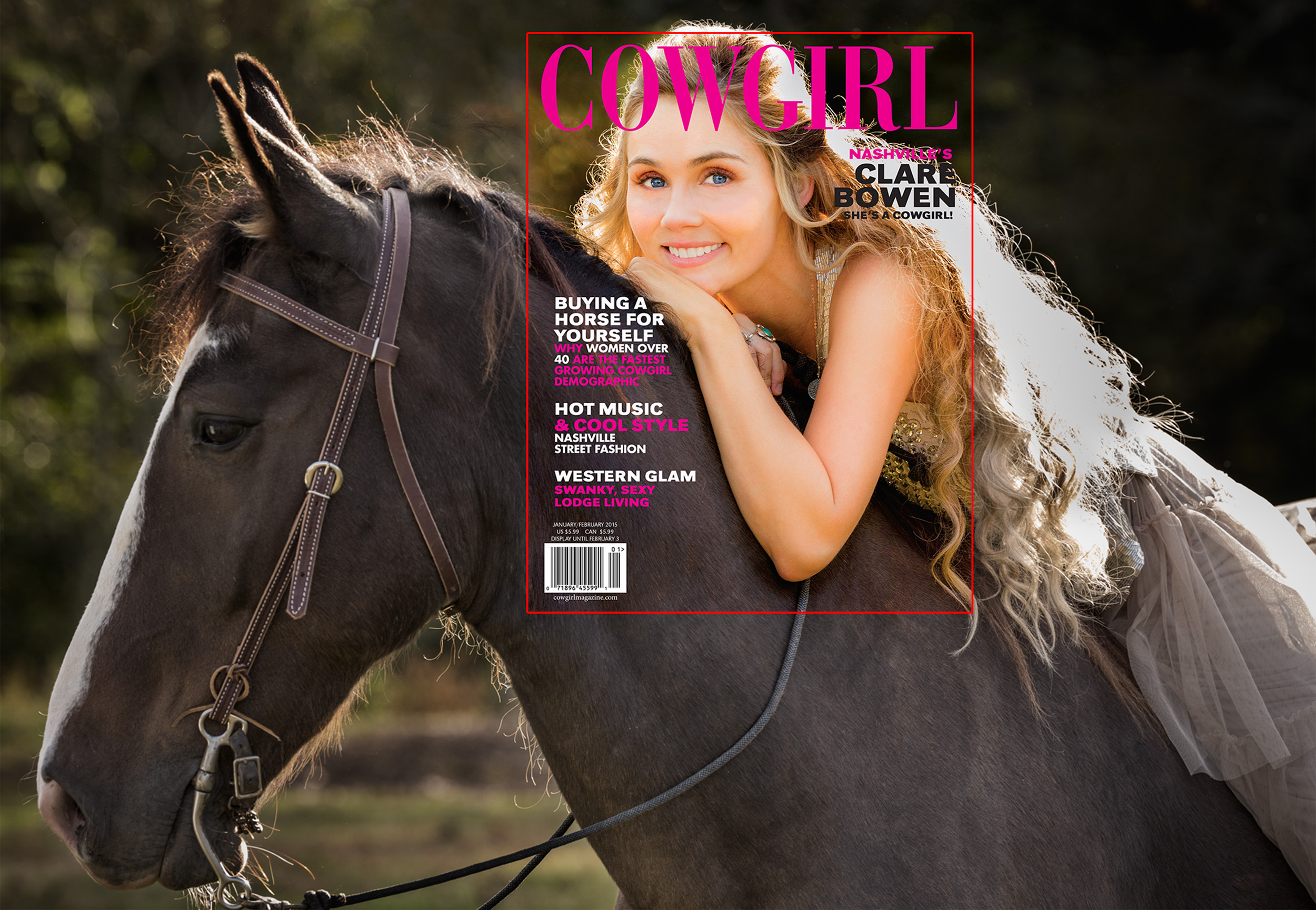
SAFETY NOTE: When working with animals, let them see and sniff the reflectors so they know they are not dangerous. If you just whip out a reflector and the horse is startled, bad things can happen up to and including death. Unlikely, but it is much better to go slow and make the animal comfortable in knowing it is safe.
This was shot on location in a very small room:


Because the room was less than exciting, I wanted the light to be very close to the model so the light would not illuminate the rest of the room. Because a small change in the distance from the model to the light made a big difference in the light values, I had to be aware of the model moving too far to/from the light source. The light is about 16”-18” from the model (41 – 46CM).
For those of you that do not understand light fall off, read How to Use the Inverse Square Law in Photography. Like all things in life, sometimes the inverse square rule will help, and other times causes problems.
In this image, shot in Milan, Italy, I wanted to put the model in a doorway. The light was just horrible, see below

So I had Emiliano, my lead assistant in Europe, bring a Sunswatter Big with a grip head and a boom stick and propped it against the wall.


With just one tool, the Sunswatter (which is a silk on an open ended stretcher frame), all of the light problems are gone:

In Milan, I found a great location with a large glass filled door. This is a test image used to check exposure & to help me see how I can shoot the location. Then I can determine what equipment I might need.

As you can see, the glass door on the right is very bright, and I could have shot there with no problem. But I wanted a more dramatic image, so I decided to shoot with strobe, this shows the lighting setup:

After balancing the strobe power to the sunlight I got this:
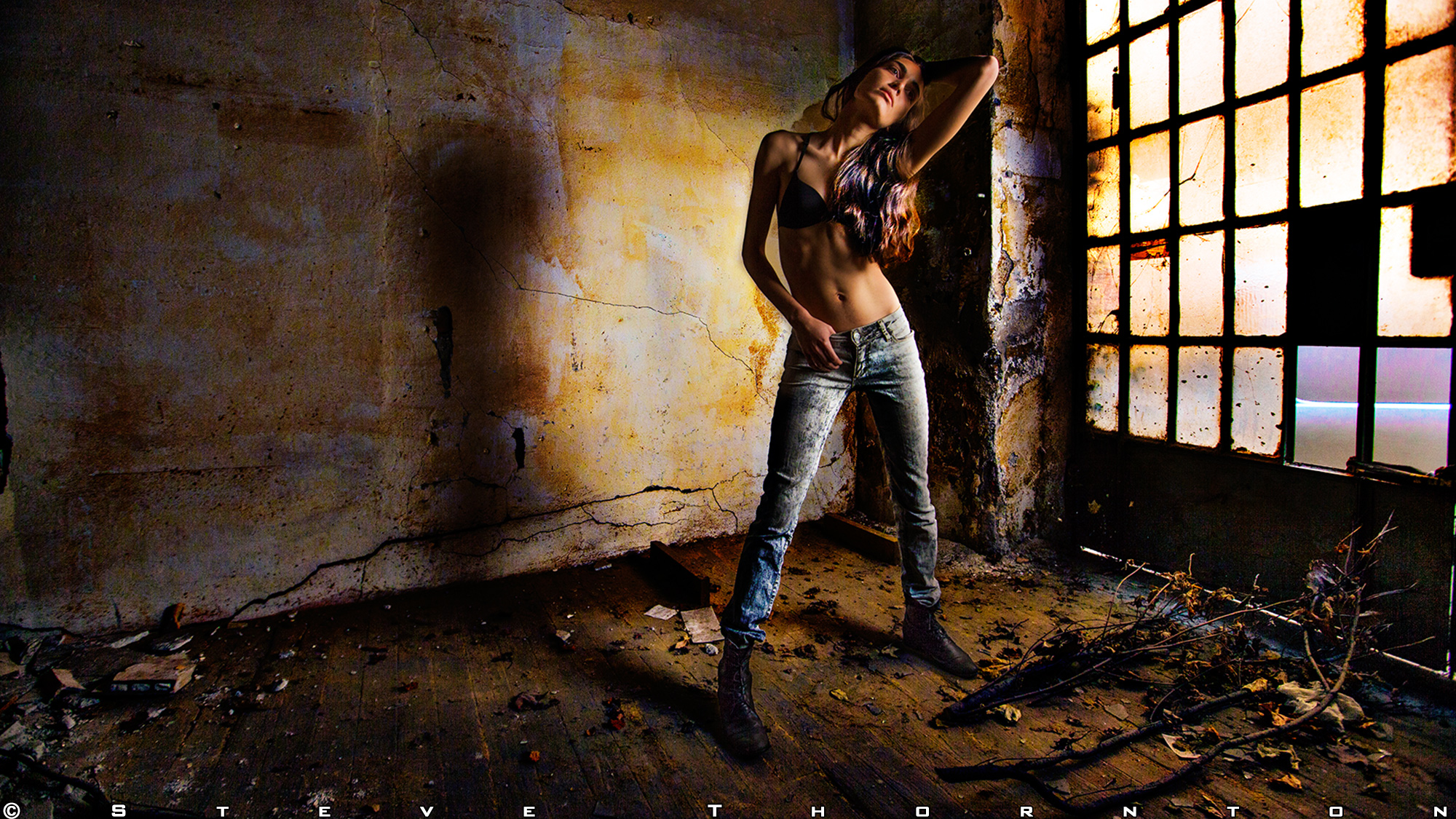
Then in ACRC (Adobe Camera RAW Converter, in Bridge or Lightroom) and some Photoshop work I got this:

And this is the final image:

This on location fashion editorial image was shot in Milan, Italy. An acquaintance told me about this location and he got us into the building. We were not supposed to be here so we moved and shot as quiet and as quickly as we could. The building was in a state of disrepair and had “Stuff” laying about. I included some “Behind the Scenes” photos above along with information as how I shot this image.I loved the glass door but If I exposed for the model, the glass would have been totally white or close to it. So I decided to use the strobe system. The bottom model photo is the light I started with, this clearly shows why strobe can be important in your image making.
In this image, shot on an abandoned farm in Milan, Italy, I have a Sunbounce Pro reflector in full sunlight and using the white side, bouncing the light onto the scene.
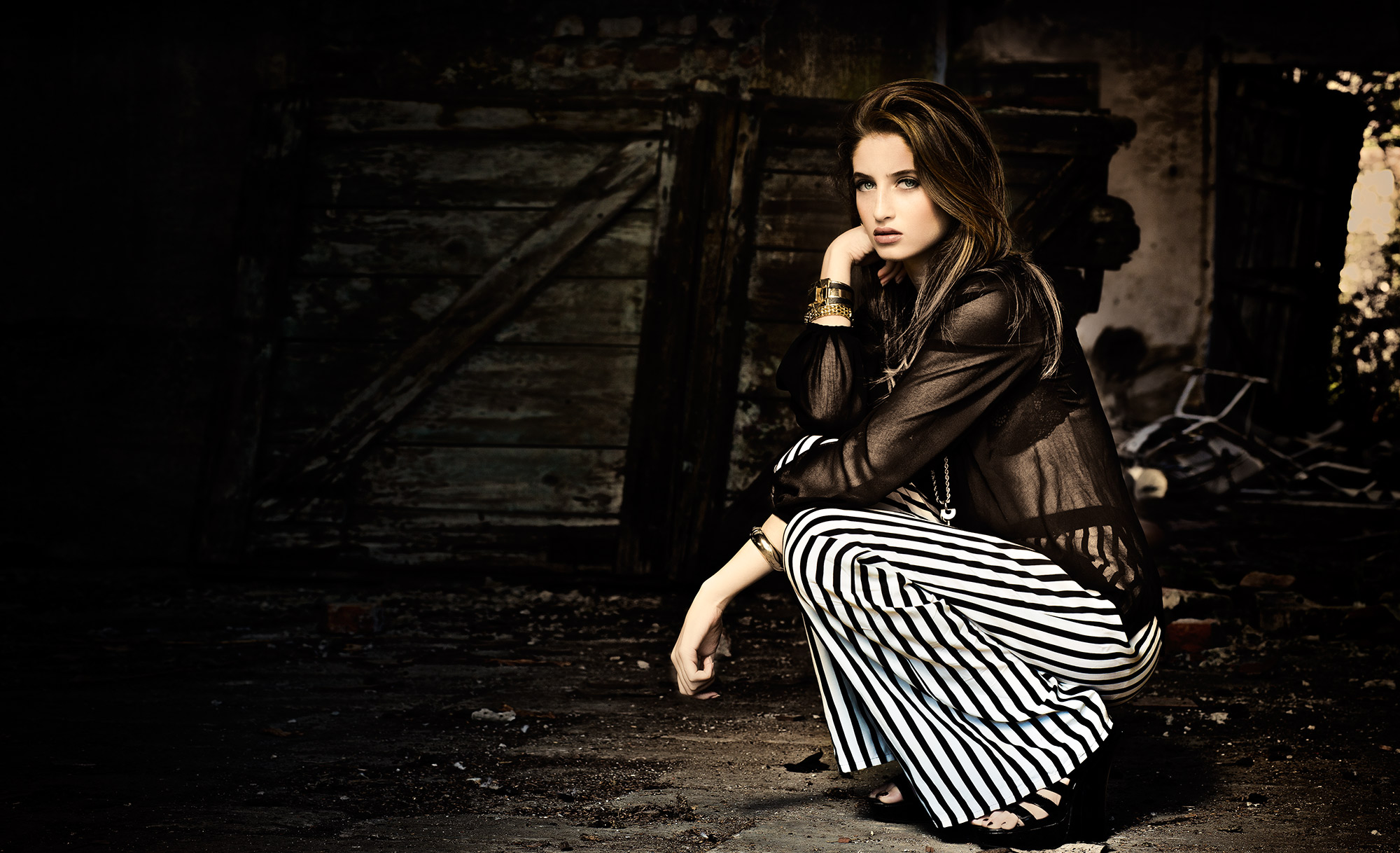
The BTS photo is a video frame and the reflector is all but blown out, but you can see it is BRIGHT:
In this image, shot in Milan, Italy, I just used the sun, nothing else, no strobe, no reflector, no building, just a camera. I positioned the model with the sun behind him.

This is an example of teaching your eye to see the light for what is really is and not what you think it is or what you want it to be or what you would like for it to be. In this image I used 2 Sunbouce Pro reflectors, both using the silver side and both had grip heads and boom sticks.



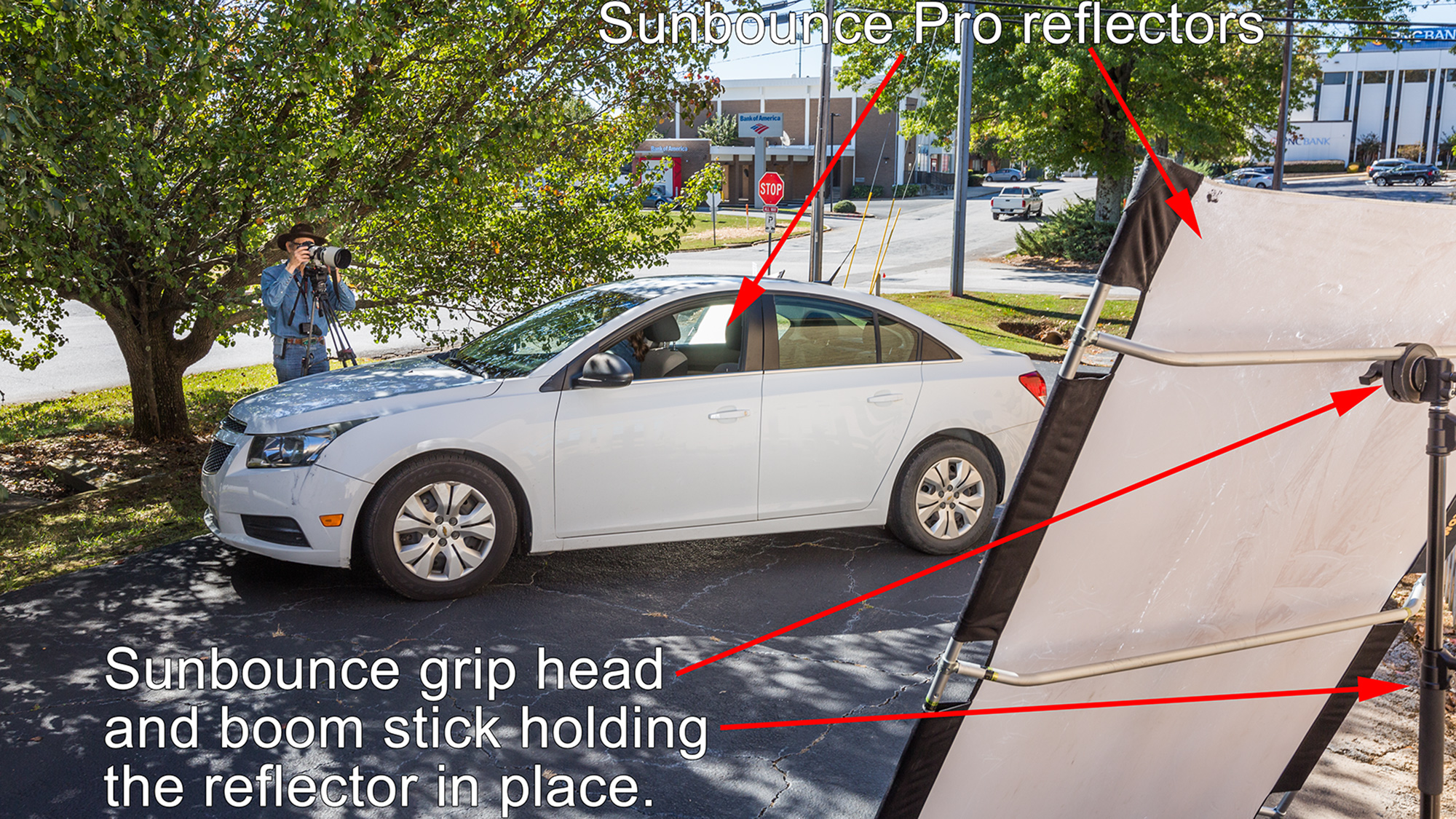
I never use any light without a purpose. I own strobes, reflectors, silks, LED lights, hot lights but I only use any of these with a purpose. A big part of this is being able to see what is in front of you light wise.
How long have you done professional photography?
Forty plus years.
What got you into photography?
My parents traveled to Europe a lot and dad would shoot slides (film) then project them and I thought this was amazing.
How do you approach your subjects to get that perfect look?
Talking, directing, then shooting, directing, then talking, then shooting, directing, then shooting, directing, then moving, then shooting, directing, then shooting, directing, then talking, directing, then shooting.
IMPORTANT: When “Something Wonderful Happens”, push the button and hold it down and only release it when the magic is gone. In other words, shoot 5 or 6 or 7 or 10 frames a second until the moment fades. For me this is normally 5-7 frames total.
In my entire career, only once on a commercial shoot using a great model has the very first frame been the best photo out of a hundred+. Normally it takes the model a bit of time to get to wonderful. You need to learn to recognize “Wonderful” when you see it.
All people, amateur and professional, want some level of direction. And some will need a great deal more than others. The directions can be simple: “Just relax and be yourself.”
What is your favorite lens? Aperture?
I have 3: Sigma 85mm f1.4, Canon 200 f2 and Canon 16-35 f2.8
I tend to shoot wide open or close to wide open.
To you, what makes a great photograph?
Any image where people stop, look and say “WOW!” is a great image. And really if they just stop and look that is great too.
If you asking me how do I get to WOW!? The answer for me, as a people photographer, is the understanding that you need to have: At least 1 model plus a crew. A crew for me is: a makeup artist, a hair stylist, wardrobe stylist and at least 1 assistant .
The photographer does a great deal more than just take photos. They decide the location and how to use it, they also decide the light, the direction they want to shoot, the spot they are in, when to push the button and how to direct the model.
All 5 of these people must be present, top professionals and on top of their role. If anyone is “Off” or tired or distracted you take the chance of not getting to WOW. The five people are: the makeup artist, a hair stylist, wardrobe stylist, the model and the photographer.
What defines your photographic style?
Mostly the use of light and framing (composition) plus the the way I finish the image. Another common element is negative space. If you don’t know what this is, either look at my imagery or Google it.
If there was one piece of advice to new photographers, what would you tell them?
This can be taken and answered in two different ways. Are you asking how to be a great image maker or are you asking how to be successful? I’m going to answer both.
If you want to be a great image maker, you must do just that… make the image, not just take it. You must have a purpose to take the image and know what you want. In other words you must be able to “See” the finished photo before you take the photo and by doing this you will then know what you will need to bring with you gear wise and how to use it. You must have a burning desire to create great images.
If you want to be a successful photographer, then learn business and selling. You do NOT need to be a great photographer to make money, you only need to know how to sell your services to a lot of people or companies.
I know a lot of great image makers that have a hard time making money. I also know a lot of photographers that are making good money that I consider to be weak photographers to just good photographers.
Then I know a very few photographer that are very successful and are great image makers.
What is your favorite or “go to” SUNBOUNCE gear and why?
My Sunbounce Pro & Big reflectors, Sunbounce Pro & Big Sunswatter, all with the boom sticks and grip heads.
Why? They work… every time. The other reasons are: they are lightweight, they assemble quickly, they dissemble quickly and fit into a case easily.
In 1993 or 1994 Michael, a photographer friend, bought a Scrim Jim reflector and I was tempted to buy one too. But as I watched Michael assemble it I decided right then and there it was not for me. Within a month I walked into a camera store to pick up some B&W print paper and I saw a Sunbounce reflector that was assembled and on a display. I looked at it and looked at the price and thought that it was a lot of money, but I instantly saw the advantages over the Scrim Jim, so I bought it.
I used this reflector for several years and decided I wanted to see what else Sunbounce had. I asked the same camera store I bought the Sunbounce reflector from and they told me they could not get any more as they were not being imported.
So I got online and found Sunbounce. remember this was when the www was in it’s early years. I saw a Sunswatter. I called Germany, where Sunbounce was based, and talked to a man there who spoke very good English. I ordered a Sunswatter a grip head and a boom stick, a dress tube and a new fabric for my original Sunbounce reflector.
Because none of this was available in the USA, I had to pay the FedEx charges, the duty, the $100 “Document Fee” for some custom’s agent to move and stamp a piece of paper and then I had to drive to the Atlanta airport and wait for some guy to find my stuff so I could pick it all up.
I paid about 75% more of the total cost of the gear just so I could have it. So a LOT of money. I still have the Sunswatter and to me it was worth every penny.
In addition to my USA Sunbounce gear, I also have a full set of Sunbounce gear in Italy. None of my Sunbounce gear has ever failed me, Yes the fabrics get dirty and the corners of the fabrics get scuffed, but they all work.
There are a lot of photographic equipment manufacturers in the world who will promise you the moon, or “buy this and you will become the next great photographer”. Sometimes it works and sometimes it was just a waste of money. In my experience over the last 25+ years of constant Sunbounce use, they are one of the very few photographic manufacturers that delivers more than they promise.
I always have Sunbounce gear with me when shooting, the reason is it will help me get better photos and/or it will solve a light problem.
If there was one thing you could change in photography what would that be?
Make glass lighter!
In closing, I would like to say to create photos, make an effort to have a mental focus to think about the shot. Pre-shoot the image in your head and learn to see the finished image in your head. In doing this you will be in good shape to shoot a WOW image.
Also remember this, if you buy something, take the time to learn HOW TO USE IT. So many people buy something thinking its use will be automatic and it will make you a better photographer… it will not be automatic and it will not make you a better photographer… at least until you learn when and how to use it. This includes the entire Sunbounce line. When you learn when, why and how to use any given photographic tool, you will become a better photographer.
There you have it from Steve Thornton who tells it like it is, and now you know why Geller chose Thornton many years ago to provide input on SUNBOUNCE products and future products, plus to put them to the synergy test.



